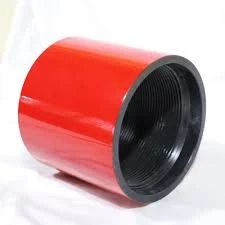- Afrikaans
- Albanian
- Amharic
- Arabic
- Armenian
- Azerbaijani
- Basque
- Belarusian
- Bengali
- Bosnian
- Bulgarian
- Catalan
- Cebuano
- Corsican
- Croatian
- Czech
- Danish
- Dutch
- English
- Esperanto
- Estonian
- Finnish
- French
- Frisian
- Galician
- Georgian
- German
- Greek
- Gujarati
- Haitian Creole
- hausa
- hawaiian
- Hebrew
- Hindi
- Miao
- Hungarian
- Icelandic
- igbo
- Indonesian
- irish
- Italian
- Japanese
- Javanese
- Kannada
- kazakh
- Khmer
- Rwandese
- Korean
- Kurdish
- Kyrgyz
- Lao
- Latin
- Latvian
- Lithuanian
- Luxembourgish
- Macedonian
- Malgashi
- Malay
- Malayalam
- Maltese
- Maori
- Marathi
- Mongolian
- Myanmar
- Nepali
- Norwegian
- Norwegian
- Occitan
- Pashto
- Persian
- Polish
- Portuguese
- Punjabi
- Romanian
- Russian
- Samoan
- Scottish Gaelic
- Serbian
- Sesotho
- Shona
- Sindhi
- Sinhala
- Slovak
- Slovenian
- Somali
- Spanish
- Sundanese
- Swahili
- Swedish
- Tagalog
- Tajik
- Tamil
- Tatar
- Telugu
- Thai
- Turkish
- Turkmen
- Ukrainian
- Urdu
- Uighur
- Uzbek
- Vietnamese
- Welsh
- Bantu
- Yiddish
- Yoruba
- Zulu
seamless pipe
Understanding Seamless Pipe Characteristics and Applications
Seamless pipes play a crucial role in various industries, serving essential functions in transporting fluid and gas under high pressure. Unlike traditional welded pipes, seamless pipes are manufactured without any seams or joints, offering significant advantages in strength and durability. This article aims to delve into the characteristics, manufacturing process, and applications of seamless pipes, highlighting why they are a preferred choice in numerous applications.
What is a Seamless Pipe?
A seamless pipe is a type of pipe that is made from a solid round steel billet. This billet is heated and then drawn over a mandrel to create a hollow tube. The absence of seams in seamless pipes makes them less likely to fail under pressure, particularly in high-stress applications. They are made from various materials, including carbon steel, stainless steel, and alloy steel, which allows for versatility in usage depending on the conditions and requirements of the application.
Characteristics of Seamless Pipes
1. High Strength and Durability Seamless pipes boast excellent tensile and impact strength due to the absence of welds. They can withstand extreme environments and high pressures—making them ideal for demanding applications such as oil and gas drilling.
2. Corrosion Resistance Many seamless pipes, particularly those made from stainless steel, offer enhanced corrosion resistance. This property is critical in industries such as chemical processing and marine applications, where exposure to corrosive substances is prevalent.
3. Consistency and Uniformity The manufacturing process of seamless pipes results in a more uniform wall thickness compared to welded pipes. This uniformity contributes to better pressure handling and flow characteristics, which is vital for systems that require precise specifications.
4. Reduced Risk of Leaks With no seams, the potential for leaks is significantly reduced. This characteristic is essential in applications such as petrochemical transport, where leaks can lead to environmental hazards and financial losses.
Manufacturing Process
seamless pipe

The production of seamless pipes begins with the selection of high-quality steel billets. These billets are heated and pierced to form a hollow tube, which is then further elongated and reduced to the desired diameter using a series of rollers. This process is known as rotary piercing and elongation. Afterward, the pipe undergoes heat treatment, which enhances its mechanical properties. Finally, the pipes are subjected to various quality checks and inspections, including non-destructive testing, to ensure they meet industry standards before being shipped out.
Applications of Seamless Pipes
Seamless pipes are widely used across various sectors, including
1. Oil and Gas Industry They are extensively used in drilling, extraction, and transportation processes where high pressures and corrosive environments are common.
2. Construction Seamless pipes serve as structural components in buildings and infrastructure due to their strength and reliability.
3. Automotive Industry They are used in making exhaust systems, hydraulic lines, and other components that require high strength and resistance to heat.
4. Chemical Processing In chemical plants, seamless pipes are crucial for transporting aggressive chemicals and gases safely.
5. Power Generation Seamless pipes are used in boilers and steam lines, where they must endure high temperatures and pressures.
Conclusion
Seamless pipes represent a critical innovation in piping technology, providing the necessary durability, strength, and reliability required for demanding applications. Their unique manufacturing process and inherent characteristics make them an ideal choice for industries such as oil and gas, construction, and chemical processing. As industries continue to evolve, the demand for seamless pipes is likely to grow, solidifying their place as a cornerstone of modern engineering and infrastructure.
-
Tubing Pup Joints: Essential Components for Oil and Gas OperationsNewsJul.10,2025
-
Pup Joints: Essential Components for Reliable Drilling OperationsNewsJul.10,2025
-
Pipe Couplings: Connecting Your World EfficientlyNewsJul.10,2025
-
Mastering Oilfield Operations with Quality Tubing and CasingNewsJul.10,2025
-
High-Quality Casing Couplings for Every NeedNewsJul.10,2025
-
Boost Your Drilling Efficiency with Premium Crossover Tools & Seating NipplesNewsJul.10,2025







